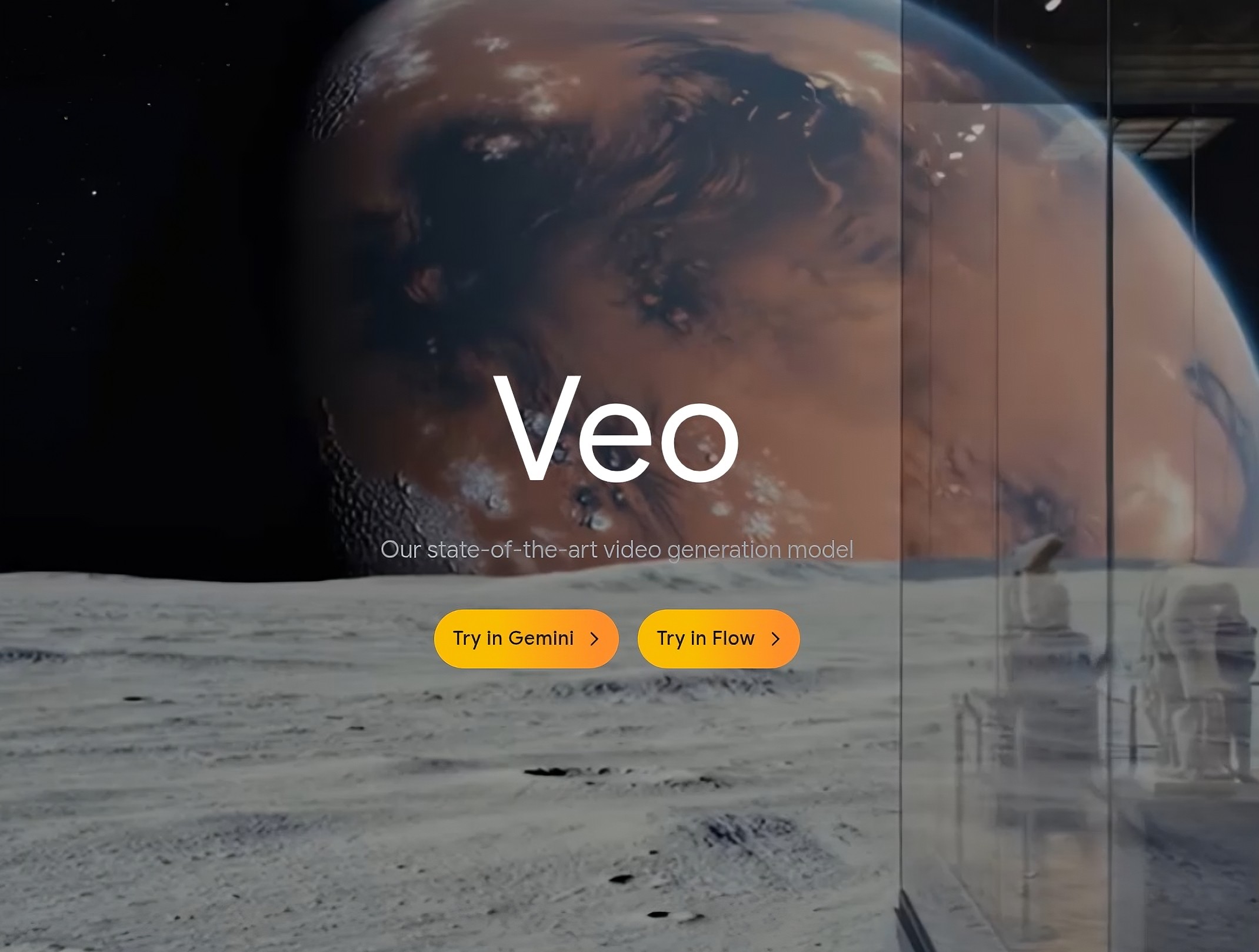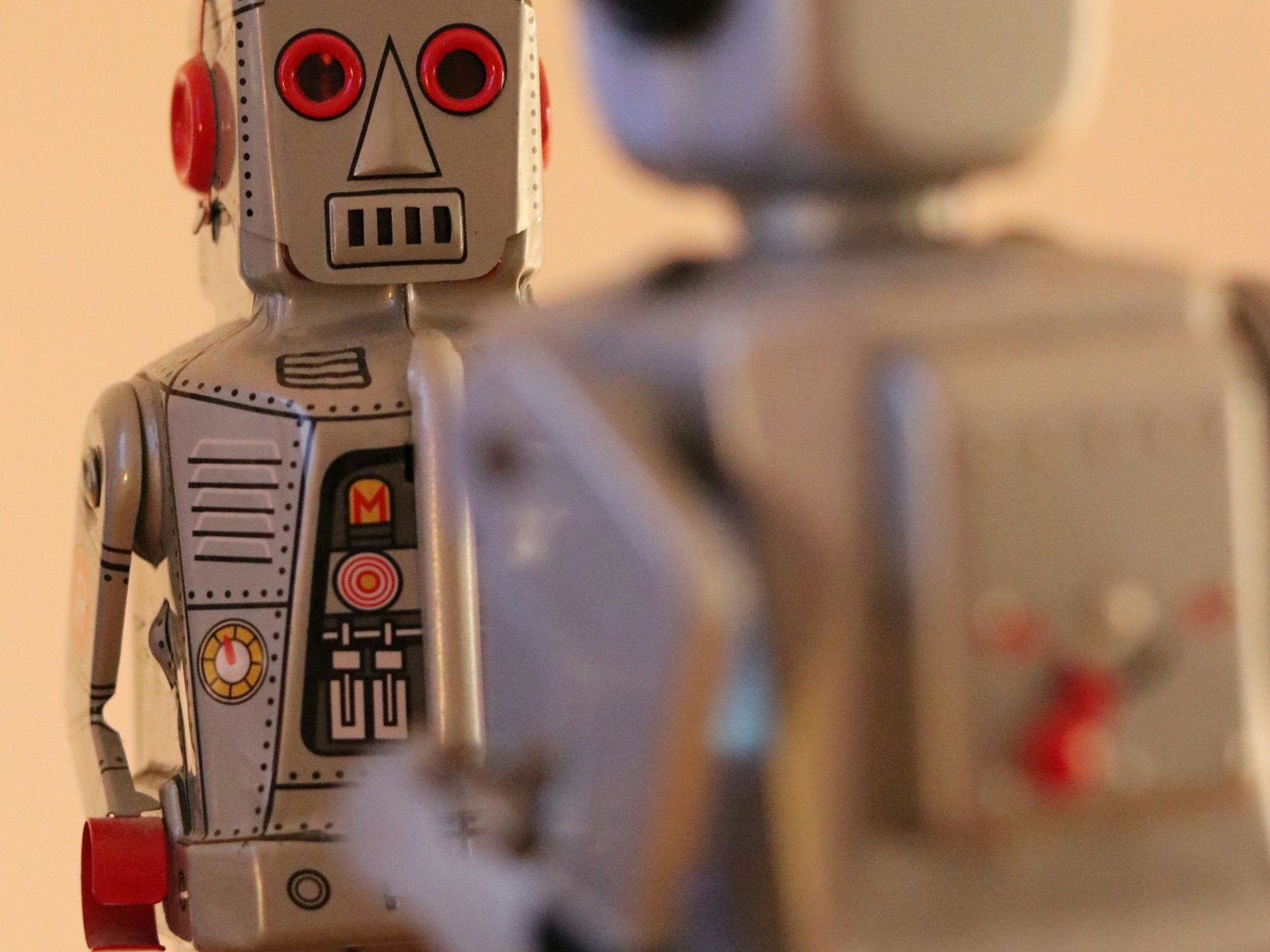Artificial Intelligence
AI Action Plan: US leadership must be ‘unchallenged’

The White House has released its ‘AI Action Plan’, which frames the coming decade as a technological race the US cannot afford to lose.
Laced with the urgent rhetoric of a new cold war, the action plan argues that securing victory in AI is nothing short of a national imperative. Trump’s foreword sets the tone, calling for America to “achieve and maintain unquestioned and unchallenged global technological dominance” as a core tenet of national security.
To get there, the administration is making a three-pronged push: ignite a firestorm of domestic innovation, build the colossal infrastructure to sustain it, and project American power across the globe to secure the win.
Pillar I: An action plan to support the private AI sector
At its heart, the strategy is a full-throated endorsement of the private sector. The first move is to take a buzzsaw to the regulatory frameworks of the past, with the document explicitly targeting the “onerous” approach of the previous administration.
The philosophy is simple: get out of the way and let innovators innovate. According to US Vice President JD Vance, smothering the technology with rules now would be to “paralyse one of the most promising technologies we have seen in generations.”
The plan even uses the power of federal funding as a stick, threatening to withhold money from states that dare to enact their own “burdensome AI regulations.”
It also strides confidently into the culture wars, insisting that AI systems paid for by the taxpayer must reflect “American values.” This means a preference for models that are “objective and free from top-down ideological bias” and a directive to scrub concepts like misinformation and Diversity, Equity, and Inclusion from the government’s official AI risk guides.
Pillar II: A foundation of concrete and code
The second pillar of the action plan relates to the raw, physical demands of the AI revolution.
“AI is the first digital service in modern life that challenges America to build vastly greater energy generation than we have today,” the plan bluntly states. Its answer is a national mobilisation under the banner of “Build, Baby, Build!”—a vast undertaking to erect data centres, bring semiconductor manufacturing home, and construct the power grid of the future.
This means fast-tracking environmental permits and overhauling the nation’s energy supply, mixing today’s power sources with tomorrow’s bets on nuclear fusion. Bringing chipmaking back to US shores is central to this vision, with a promise to refocus the CHIPS Program Office on delivering results without ideological strings attached.
And, behind it all, a push to train a new generation of technicians and engineers to build and maintain this new industrial backbone.
Pillar III: Ensuring an undisputed lead on the world stage
The final pillar is about shaping the world in America’s image. The ambition is to make the entire US tech stack – from silicon to the software – the undisputed “gold standard for AI worldwide.” This involves an aggressive export strategy to arm allies with American technology, explicitly to counter the influence of a rising China.
This new foreign policy will involve pushing back against Chinese influence in global forums like the United Nations, which the administration believes are being used to promote innovation-killing regulations. It also signals a more hawkish approach to security, demanding tighter controls on the advanced chips that fuel AI progress.
The plan confronts the dark side of AI head-on, acknowledging its potential for misuse in everything from cybercrime to bioweapons, and calls for a national effort to get ahead of the threat.
AI Action Plan lands in a divided industry
The administration’s confident blueprint for the future lands in an industry deeply conflicted about its own creation. Just this week, OpenAI CEO Sam Altman warned about the technology’s disruptive power.
Altman warns that AI will not only eliminate jobs but also pose national security threats. He has spoken of a looming “fraud crisis” powered by AI’s ability to fool security systems, and has gone so far as to co-sign a letter stating that “mitigating the risk of extinction from AI should be a global priority”.
His commentary is a stark reminder that the race for AI dominance is also a race to control a technology with world-altering potential. While Washington focuses on winning, the architects of AI are quietly wrestling with what victory might actually mean.
However, the plan received a cautious welcome from the nonprofit Americans for Responsible Innovation (ARI). The group saw its own fingerprints on several proposals, from stronger export controls to more research into AI safety.
Yet ARI is deeply troubled by the administration’s move to punish states that pursue their own AI safety rules. This position also seems at odds with the views of industry leaders like Altman, who has himself warned against the chaos of 50 different state-level regulations.
“Ultimately, this action plan is about increasing oversight of AI systems while maintaining a hands-off approach to hard and fast regulations,” said ARI President Brad Carson. He sees a chance to better understand the “big risks frontier models create for the public,” but worries about the administration’s tactics.
“The plan’s targeting of state-passed AI safeguards is cause for concern. For America to lead on AI, we have to build public trust in these systems, and safeguards are essential to that public confidence.”
(Photo by Luke Michael)
See also: Sam Altman: AI will cause job losses and national security threats
Want to learn more about AI and big data from industry leaders? Check out AI & Big Data Expo taking place in Amsterdam, California, and London. The comprehensive event is co-located with other leading events including Intelligent Automation Conference, BlockX, Digital Transformation Week, and Cyber Security & Cloud Expo.
Explore other upcoming enterprise technology events and webinars powered by TechForge here.
Artificial Intelligence
Zuckerberg outlines Meta’s AI vision for ‘personal superintelligence’

Meta CEO Mark Zuckerberg has laid out his blueprint for the future of AI, and it’s about giving you “personal superintelligence”.
In a letter, the Meta chief painted a picture of what’s coming next, and he believes it’s closer than we think. He says his teams are already seeing early signs of progress.
“Over the last few months we have begun to see glimpses of our AI systems improving themselves,” Zuckerberg wrote. “The improvement is slow for now, but undeniable. Developing superintelligence is now in sight.”
So, what does he want to do with it? Forget AI that just automates boring office work, Zuckerberg and Meta’s vision for personal superintelligence is far more intimate. He imagines a future where technology serves our individual growth, not just our productivity.
In his words, the real revolution will be “everyone having a personal superintelligence that helps you achieve your goals, create what you want to see in the world, experience any adventure, be a better friend to those you care about, and grow to become the person you aspire to be.”
But here’s where it gets interesting. He drew a clear line in the sand, contrasting his vision against a very different, almost dystopian alternative that he believes others are pursuing.
“This is distinct from others in the industry who believe superintelligence should be directed centrally towards automating all valuable work, and then humanity will live on a dole of its output,” he stated.
Meta, Zuckerberg says, is betting on the individual when it comes to AI superintelligence. The company believes that progress has always come from people chasing their own dreams, not from living off the scraps of a hyper-efficient machine.
If he’s right, we’ll spend less time wrestling with software and more time creating and connecting. This personal AI would live in devices like smart glasses, understanding our world because they can “see what we see, hear what we hear.”
Of course, he knows this is powerful, even dangerous, stuff. Zuckerberg admits that superintelligence will bring new safety concerns and that Meta will have to be careful about what they release to the world. Still, he argues that the goal must be to empower people as much as possible.
Zuckerberg believes we’re at a crossroads right now. The choices we make in the next few years will decide everything.
“The rest of this decade seems likely to be the decisive period for determining the path this technology will take,” he warned, framing it as a choice between “personal empowerment or a force focused on replacing large swaths of society.”
Zuckerberg has made his choice. He’s focusing Meta’s enormous resources on building this personal superintelligence future.
See also: Forget the Turing Test, AI’s real challenge is communication
Want to learn more about AI and big data from industry leaders? Check out AI & Big Data Expo taking place in Amsterdam, California, and London. The comprehensive event is co-located with other leading events including Intelligent Automation Conference, BlockX, Digital Transformation Week, and Cyber Security & Cloud Expo.
Explore other upcoming enterprise technology events and webinars powered by TechForge here.
Artificial Intelligence
Google’s Veo 3 AI video creation tools are now widely available

Google has made its most powerful AI video creator, Veo 3, available for everyone to use on its Vertex AI platform. And for those who need to work quickly, a speedier version called Veo 3 Fast is also ready-to-go for quick creative work.
Ever had a brilliant idea for a video but found yourself held back by the cost, time, or technical skills needed to create it? This tool aims to offer a faster way to turn your text ideas into everything from short films to product demos.
70 million videos have been created since May, showing a huge global appetite for these AI video creation tools. Businesses are diving in as well, generating over 6 million videos since they got early access in June.
The real-world applications for Veo 3
So, what does this look like in the real world? From global design platforms to major advertising agencies, companies are already putting Veo 3 to work. Take design platform Canva, they are building Veo directly into their software to make video creation simple for their users.
Cameron Adams, Co-Founder and Chief Product Officer at Canva, said: “Enabling anyone to bring their ideas to life – especially their most creative ones – has been core to Canva’s mission ever since we set out to empower the world to design.
“By democratising access to a powerful technology like Google’s Veo 3 inside Canva AI, your big ideas can now be brought to life in the highest quality video and sound, all from within your existing Canva subscription. In true Canva fashion, we’ve built this with an intuitive interface and simple editing tools in place, all backed by Canva Shield.”
For creative agencies like BarkleyOKRP, the big wins are speed and quality. They claim to have been so impressed with the latest version that they went back and remade videos.
Julie Ray Barr, Senior Vice President Client Experience at BarkleyOKRP, commented: “The rapid advancements from Veo 2 to Veo 3 within such a short time frame on this project have been nothing short of remarkable.
“Our team undertook the task of re-creating numerous music videos initially produced with Veo 2 once Veo 3 was released, primarily due to the significantly improved synchronization between voice and mouth movements. The continuous daily progress we are witnessing is truly extraordinary.”
It’s even changing how global companies connect with local customers. The investing platform eToro used Veo 3 to create 15 different, fully AI-generated versions of a single advertisement, each customised to a specific country with its own native language.
Shay Chikotay, Head of Creative & Content at eToro, said: “With Veo 3, we produced 15 fully AI‑generated versions of our ad, each in the native language of its market, all while capturing real emotion at scale.
“Ironically, AI didn’t reduce humanity; it amplified it. Veo 3 lets us tell more stories, in more tongues, with more impact.”
Google gives creators a powerful AI video creation tool
Veo 3 and Veo 3 Fast are packed with features designed to give you the control to tell complete stories.
- Create scenes with sound. The AI generates video and audio at the same time, so you can have characters that speak with accurate lip-syncing and sound effects that fit the scene.
- High quality results. The models produce video in high-definition (1080p), making it good enough for professional marketing campaigns and demos.
- Reach a global audience easily. Veo 3’s ability to generate dialogue natively makes it much simpler to produce a video once and then translate the dialogue for many different languages.
- Bring still images to life. A new feature, coming in August, will let you take a single photo, add a text prompt, and watch as Veo animates it into an 8-second video clip.
Of course, with such powerful technology, safety is a key concern. Google has built Veo 3 for responsible enterprise use. Every video frame is embedded with an invisible digital watermark from SynthID to help combat misinformation. The service is also covered by Google’s indemnity for generative AI, giving businesses that extra layer of security.
See also: Google’s newest Gemini 2.5 model aims for ‘intelligence per dollar’
Want to learn more about AI and big data from industry leaders? Check out AI & Big Data Expo taking place in Amsterdam, California, and London. The comprehensive event is co-located with other leading events including Intelligent Automation Conference, BlockX, Digital Transformation Week, and Cyber Security & Cloud Expo.
Explore other upcoming enterprise technology events and webinars powered by TechForge here.
Artificial Intelligence
Forget the Turing Test, AI’s real challenge is communication

While the development of increasingly powerful AI models grabs headlines, the big challenge is getting intelligent agents to communicate.
Right now, we have all these capable systems, but they’re all speaking different languages. It’s a digital Tower of Babel, and it’s holding back the true potential of what AI can achieve.
To move forward, we need a common tongue; a universal translator that will allow these different systems to connect and collaborate. Several contenders have stepped up to the plate, each with their own ideas about how to solve this communication puzzle.
Anthropic’s Model Context Protocol, or MCP, is one of the big names in the ring. It attempts to create a secure and organised way for AI models to use external tools and data. MCP has become popular because it’s relatively simple and has the backing of a major AI player. However, it’s really designed for a single AI to use different tools, not for a team of AIs to work together.
And that’s where other protocols like the Agent Communication Protocol (ACP) and the Agent-to-Agent Protocol (A2A) come in.
ACP, an open-source project from IBM, is all about enabling AI agents to communicate as peers. It’s built on familiar web technologies that developers are already comfortable with, which makes it easy to adopt. It’s a flexible and powerful solution that allows for a more decentralised and collaborative approach to AI.
Google’s A2A protocol, meanwhile, takes a slightly different tack. It’s designed to work alongside MCP, rather than replace it. A2A is focused on how a team of AIs can work together on complex tasks, passing information and responsibilities back and forth. It uses a system of ‘Agent Cards,’ like digital business cards, to help AIs find and understand each other.
The real difference between these protocols is their vision for the future of how AI agents communicate. MCP is for a world where a single, powerful AI is at the centre, using a variety of tools to get things done. ACP and A2A are designed for distributed intelligence, where teams of specialised AIs work together to solve problems.
A universal language for AI would open the door to a whole new world of possibilities. Imagine a team of AIs working together to design a new product, with one agent handling the market research, another the design, and a third the manufacturing process. Or a network of medical AIs collaborating to analyse patient data and develop personalised treatment plans.
But we’re not there yet. The “protocol wars” are in full swing, and there’s a real risk that we could end up with even more fragmentation than we have now.
It’s likely that the future of how AI communicates won’t be a one-size-fits-all solution. We may see different protocols, each used for what it does best. One thing is for sure: figuring out how to get AIs to talk to each other is among the next great challenges in the field.
(Photo by Theodore Poncet)
See also: Anthropic deploys AI agents to audit models for safety
Want to learn more about AI and big data from industry leaders? Check out AI & Big Data Expo taking place in Amsterdam, California, and London. The comprehensive event is co-located with other leading events including Intelligent Automation Conference, BlockX, Digital Transformation Week, and Cyber Security & Cloud Expo.
Explore other upcoming enterprise technology events and webinars powered by TechForge here.

 Fintech1 week ago
Fintech1 week agoOpenAI and UK Government Partner on AI Infrastructure and Deployment

 Latest Tech News2 weeks ago
Latest Tech News2 weeks agoThe tech that the US Post Office gave us

 Cyber Security1 week ago
Cyber Security1 week agoMicrosoft Fix Targets Attacks on SharePoint Zero-Day – Krebs on Security

 Latest Tech News1 week ago
Latest Tech News1 week agoTrump wanted to break up Nvidia — but then its CEO won him over

 Artificial Intelligence2 weeks ago
Artificial Intelligence2 weeks agoApple loses key AI leader to Meta

 Latest Tech News5 days ago
Latest Tech News5 days agoGPD’s monster Strix Halo handheld requires a battery ‘backpack’ or a 180W charger

 Cyber Security6 days ago
Cyber Security6 days agoPhishers Target Aviation Execs to Scam Customers – Krebs on Security

 Artificial Intelligence1 week ago
Artificial Intelligence1 week agoWhy Apple is playing it slow with AI

















